Details:
In tones of green, burgundy, and purple, intricate motifs inspired by the pre-Hispanic Nahua peoples are painted by hand onto a majestic hyena. Mexican artisan Teresita Gonzalez creates this traditional alebrije sculpture, which is carved from copal wood.
It is said that Oaxaca's alebrije tradition descends directly from Mexico City papier mache artisan Pedro Linares (1906-1992). When he was 30, he became seriously ill and fell into a sort of coma. While he was unconscious, he had a most fantastic dream. He was caught between the land of the living and the dead; the place looked like a forest and was populated with creatures with body parts belonging to different animals. The beings repeatedly uttered the word alebrije, and when Linares woke up, he recreated these figures in vivid colors using papier mache techniques and called them alebrijes . His work became famous and eventually influenced artisans in the state of Oaxaca who decided to craft alebrijes using traditional wood carving methods and according to that region's world vision.
Product Features:
Story Behind the art:
Update (August, 2019) "My walk hand in hand with Mexican handicrafts began when I started working with copal wood as a way of therapy to relieve my cancer. I struggled with my inner demons; it was a very difficult time. It was thanks to the alebrijes that I started to come alive again. I understood that my mission is to preserve this art that saved my life. It is something that gives me life, and transmitting it to others gives me the assurance of what my mission in life is. "They have recognized me locally at the FOFA (Friends of Oaxacan Folk Art). And I have received honorable mentions. My work has taken me farther than I ever thought." Original Artisan StoryI was born in 1965 to a large family in Oaxaca. I am one of 12 children and I enjoy the peace of the ranch where I was born. My life has been filled with emotions and I paint for love and necessity, for self-improvement and with clear goals. I achieved this goal even when many doubted me. I went to Mexico City to find work. Then, I worked as a baker and found odd jobs to earn money so I'd no longer be a burden to my father. Although I had no idea of technique, I began painting. Some people said I wouldn't be able to shine in the art world, but I developed my painting ability with time. I'd look at myself and think about not living anymore. For three years, I stayed away from everyone and everything. I stayed in my room without wanting to go anywhere. I didn't want to face life, but I'd look at my son and I knew my work in life wasn't finished. I had to keep going for him and it was when I began painting as a form of therapy. I continued painting, but my work never sold. But I had faith in God and in myself. One day, a foreigner approached me and asked if I made alebrijes, which are traditional Mexican figurines, carved free-form from oddly shaped pieces of wood and painted in fanciful colors. I let the man take a look at my work and he admired it. He said he wanted to buy it all. I was so surprised, I was speechless! After that, I knew I couldn't give up and I recovered my faith. With practice, I learned different painting techniques like textures, shading and delineating, which have helped me stand out from other alebrije artisans in my town. I've learned to believe in life and to have dreams. One of them is for my art to be known around the world.
The handmade touch of artisan skill creates variations in color, size and design. If buying two of the same item, slight differences should be expected. Note: Color discrepancies may occur between this product and your computer screen.
Imported
It is said that Oaxaca's alebrije tradition descends directly from Mexico City papier mache artisan Pedro Linares (1906-1992). When he was 30, he became seriously ill and fell into a sort of coma. While he was unconscious, he had a most fantastic dream. He was caught between the land of the living and the dead; the place looked like a forest and was populated with creatures with body parts belonging to different animals. The beings repeatedly uttered the word alebrije, and when Linares woke up, he recreated these figures in vivid colors using papier mache techniques and called them alebrijes . His work became famous and eventually influenced artisans in the state of Oaxaca who decided to craft alebrijes using traditional wood carving methods and according to that region's world vision.
Product Features:
- Dimension: 5.75" H x 5" W x 2.6" D
- Weight: 0.2
- Color: Green
- Material: Copal wood
- Green
- Signed by the artist
- Made In Mexico
Story Behind the art:
Update (August, 2019) "My walk hand in hand with Mexican handicrafts began when I started working with copal wood as a way of therapy to relieve my cancer. I struggled with my inner demons; it was a very difficult time. It was thanks to the alebrijes that I started to come alive again. I understood that my mission is to preserve this art that saved my life. It is something that gives me life, and transmitting it to others gives me the assurance of what my mission in life is. "They have recognized me locally at the FOFA (Friends of Oaxacan Folk Art). And I have received honorable mentions. My work has taken me farther than I ever thought." Original Artisan StoryI was born in 1965 to a large family in Oaxaca. I am one of 12 children and I enjoy the peace of the ranch where I was born. My life has been filled with emotions and I paint for love and necessity, for self-improvement and with clear goals. I achieved this goal even when many doubted me. I went to Mexico City to find work. Then, I worked as a baker and found odd jobs to earn money so I'd no longer be a burden to my father. Although I had no idea of technique, I began painting. Some people said I wouldn't be able to shine in the art world, but I developed my painting ability with time. I'd look at myself and think about not living anymore. For three years, I stayed away from everyone and everything. I stayed in my room without wanting to go anywhere. I didn't want to face life, but I'd look at my son and I knew my work in life wasn't finished. I had to keep going for him and it was when I began painting as a form of therapy. I continued painting, but my work never sold. But I had faith in God and in myself. One day, a foreigner approached me and asked if I made alebrijes, which are traditional Mexican figurines, carved free-form from oddly shaped pieces of wood and painted in fanciful colors. I let the man take a look at my work and he admired it. He said he wanted to buy it all. I was so surprised, I was speechless! After that, I knew I couldn't give up and I recovered my faith. With practice, I learned different painting techniques like textures, shading and delineating, which have helped me stand out from other alebrije artisans in my town. I've learned to believe in life and to have dreams. One of them is for my art to be known around the world.
The handmade touch of artisan skill creates variations in color, size and design. If buying two of the same item, slight differences should be expected. Note: Color discrepancies may occur between this product and your computer screen.
Imported

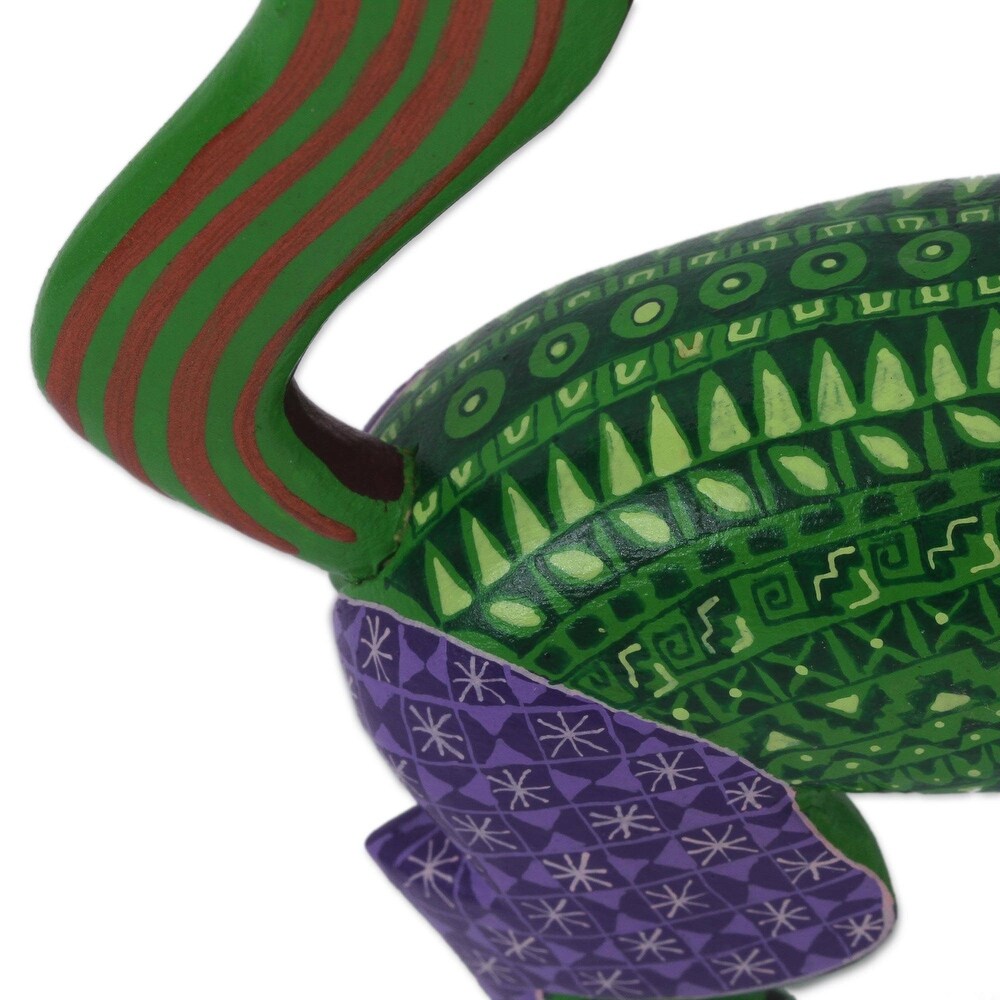
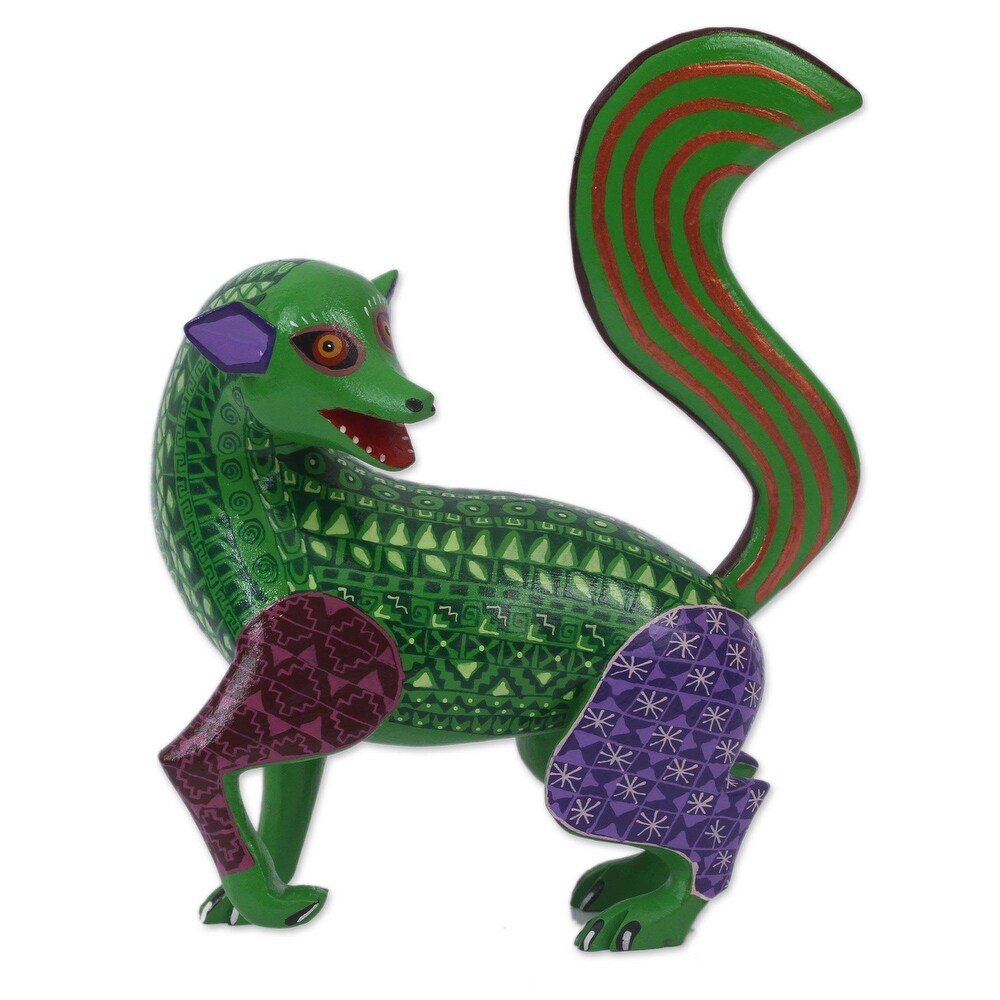
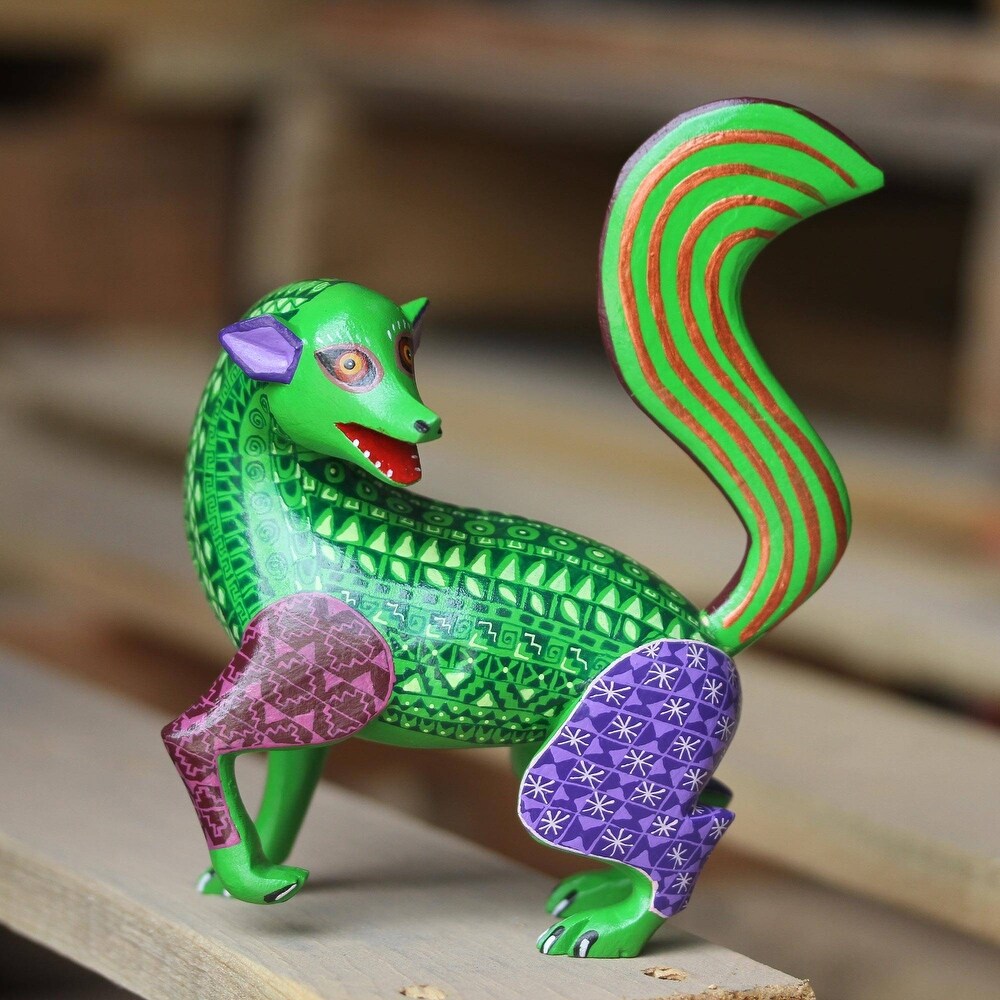
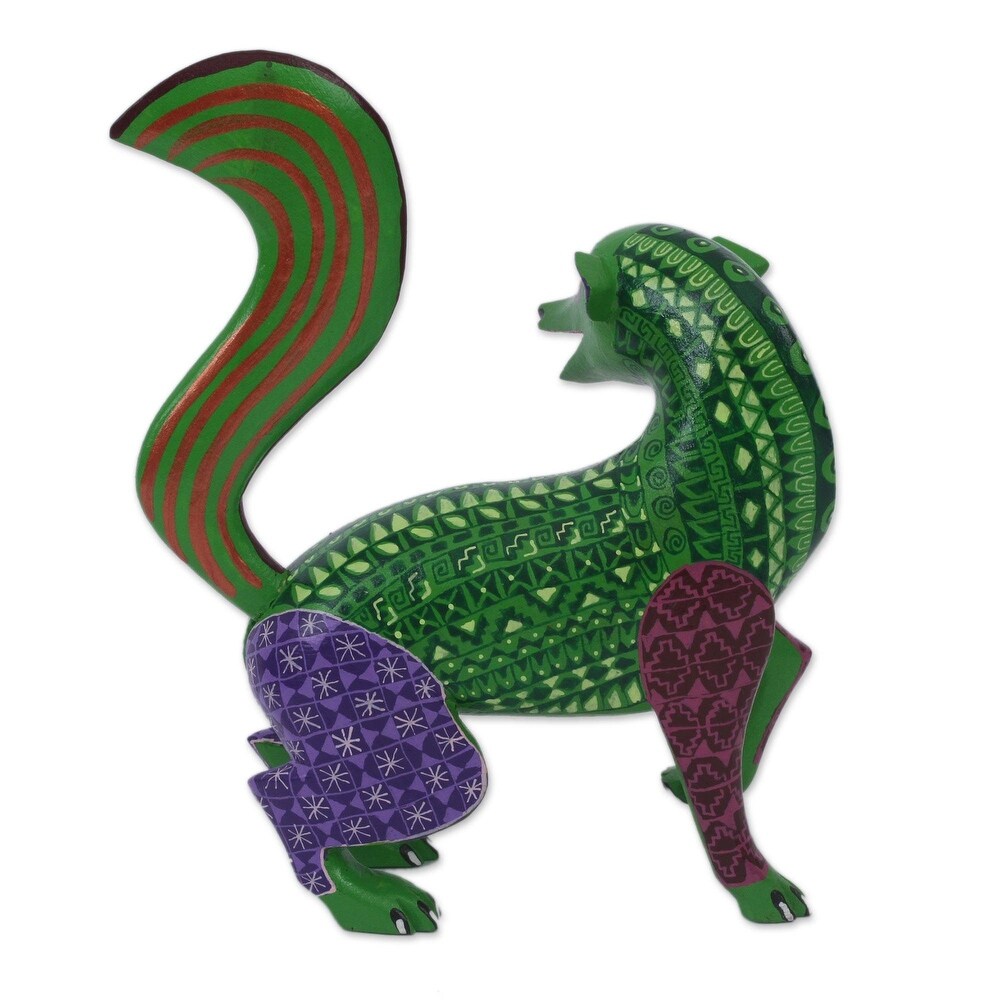
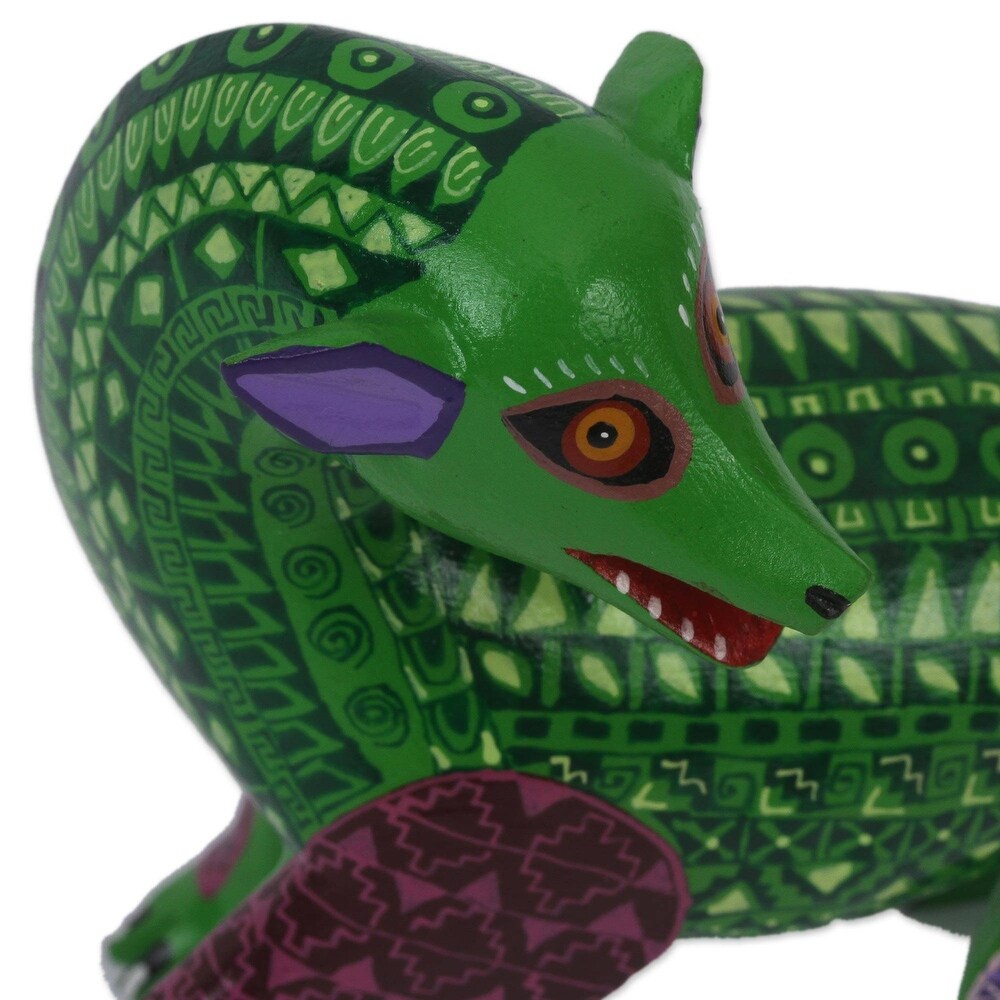

Comment